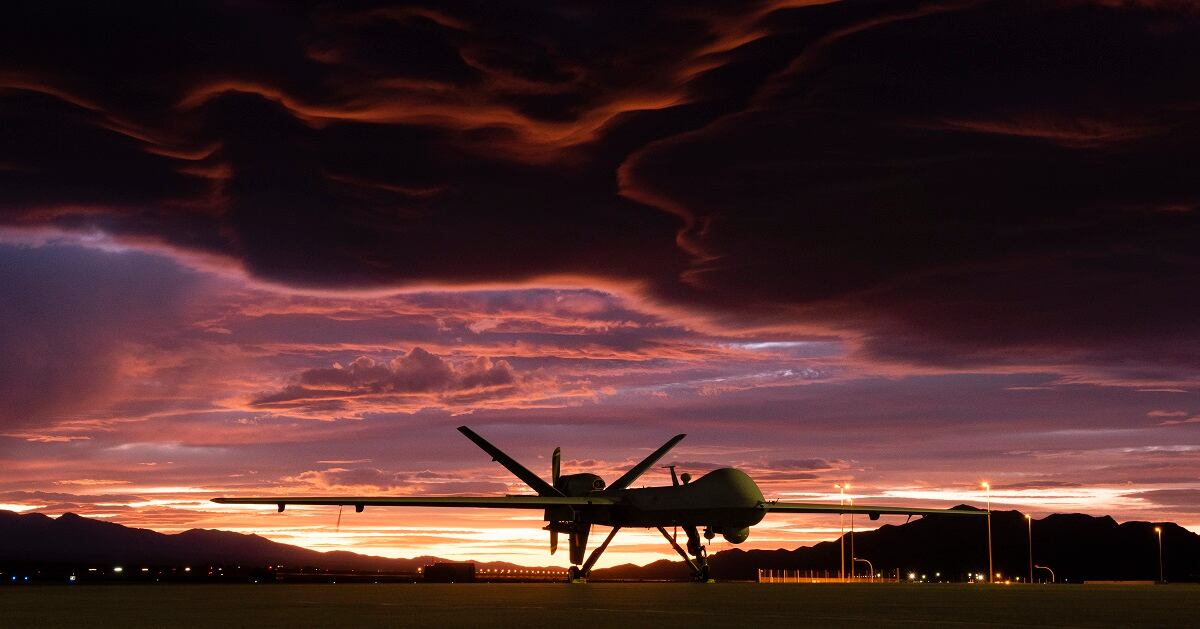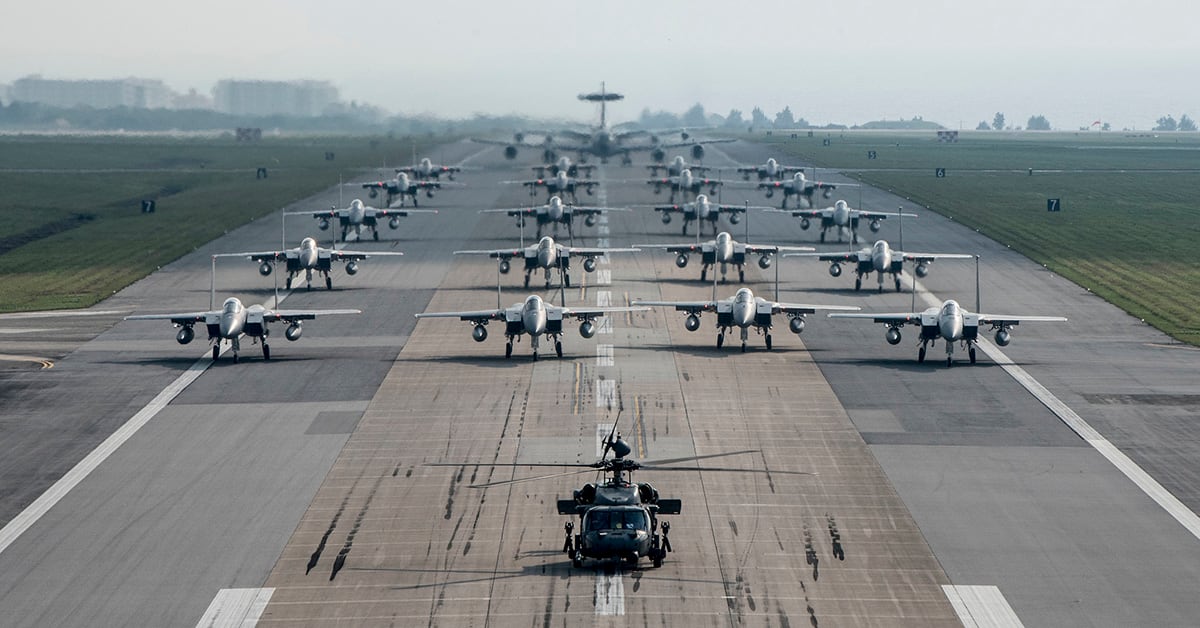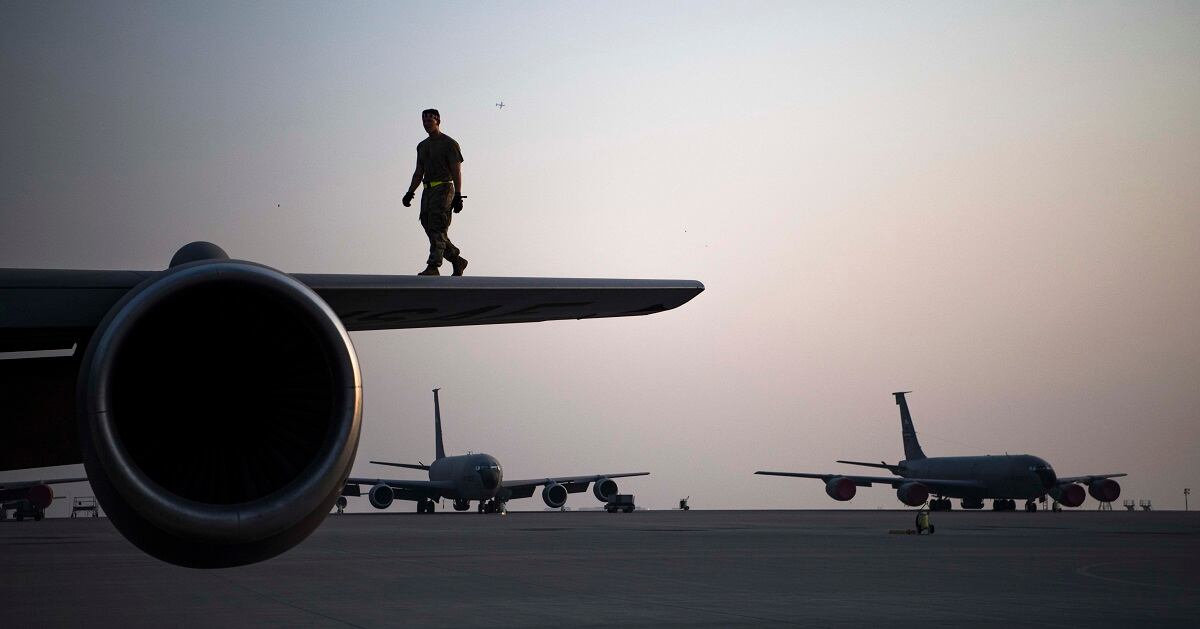Time is running out for the Air Force’s ambitious proposal to grow to 386 operational squadrons by 2030.
It may already be too late.
For the second year in a row since “The Air Force We Need” proposal was unveiled in September 2018, the service’s proposed budget contained nothing to add squadrons, or even anything specific to lay the groundwork for the service’s stated desired for 24 percent growth in the size of the fleet.
In the White House’s annual budget proposal for 2021, unveiled at the Pentagon on Feb. 10, the Department of the Air Force proposed a modest uptick for next year’s budget, a total increase of about $900 million more than its $168.1 billion total budget for this year. (The Department of the Air Force budget now includes both the Air Force budget as well as funding for the new Space Force.)
In a Feb. 10 news conference at the Pentagon, Maj. Gen. John Pletcher, the Air Force deputy assistant secretary for budget, insisted the plan was not dead.
But the gravy train for increased military spending under the Trump administration — which has made support for the military and building operational readiness a key priority for the federal budget — may have already run its course. The 2021 budget proposal does not include the same kind of sharp increases in defense spending seen in the first several years of the Trump administration, in fact, the proposed top lines for the Army and Navy have declined from last year. In the Air Force, the proposed budget, while not as draconian as some had predicted, would still retire dozens of aircraft.
If a Democrat unseats Trump in the fall — particularly if the candidate is a defense spending skeptic such as Sen. Bernie Sanders — it’s hard to see the next administration being inclined to spend vast amounts of money on more aircraft squadrons.
If Trump is re-elected, a marked spending increase is still unlikely, given the country’s growing budget deficit. Even President Ronald Reagan, who oversaw a massive military build-up in the 1980s, began to cut procurement spending during the last two years of his administration to start balancing other accounts, said John Venable, a defense expert at the Heritage Foundation and former F-16 pilot. He sees the Trump administration’s latest budget proposal as starting to do the same.
That means the dream of 386 squadrons is effectively dead, he said.
“I think the Air Force has no intent, and no intention, on fulfilling their own planning requirements,” Venable said in a Feb. 14 interview. “The Air Force is now starting to walk away from that study, and I think that’s a strategic mistake.”
The Air Force currently has about 312 operational squadrons.

Retired Gen. Hawk Carlisle, former head of Air Combat Command and current president of the National Defense Industrial Association, agreed that signs do not bode well.
“I think it’s tough to see the avenue to get there in the current environment we’re in,” Carlisle said.
The target of growing to 386 squadrons first emerged in the official report entitled “The Air Force We Need,” which was crafted after the National Defense Strategy, published in 2018. In the report, the Air Force warned of a return to great power competition and laid out what the Air Force would truly need — if unconstrained by budget limitations — to defeat a peer adversary such as China or Russia while also having enough additional capability to support other essential missions, which would include defending the homeland, providing a credible nuclear deterrent, fighting violent extremists such as the Islamic State militants and also, in a worst-case scenario, countering a medium-sized rogue nation along the lines of Iran that might try to take advantage of the U.S. focus on major adversaries.
“We must see the world as it is,” former Air Force Secretary Heather Wilson said while announcing the plan at the 2018 Air Force Association conference. “That was why the National Defense Strategy explicitly recognizes that we have returned to an era of great power competition.”
The Air Force was so focused on the proposal that it even made and distributed coffee mugs emblazoned with “386” at the AFA conference.
In a Feb. 12 interview, Wilson told Air Force Times that the Air Force’s best analysis found that an additional 74 squadrons would allow the service to carry out all those missions at a moderate risk.
“Anything that doesn’t start moving us toward that end increases the risk that the mission won’t be accomplished, or that casualties will be much higher than they need to be,” Wilson said.
Irrelevant from the start?
Chief of Staff Gen. Dave Goldfein said the service’s desire for 386 squadrons isn’t dead, but he did acknowledge that “there’s a difference between the Air Force we need and the Air Force that we can afford.”
Goldfein, in a Feb. 18 interview with Defense News, a sister publication to Air Force Times, said the Air Force ran 2,000 computer simulations gaming out what would be necessary to defeat a nuclear peer threat around 2030 with moderate risk, and this proposal was what resulted. It’s still the right plan, he said, but remains impossible with current resources.
“That analysis still stands today, and if we had the money, we would absolutely be building to that capacity,” Goldfein said. “But you’ve got to make trades within every chief’s sandbox: Capability, capacity, readiness.”
“There were not the resources to go just capacity, and frankly, that would not have been the right decision, because you also need increased capability.”
Todd Harrison, the director of defense budget analysis for the Center for Strategic and International Studies, said in an interview that the Air Force’s decision in 2018 to assume no budget constraints when preparing the 386-squadron proposal doomed it to being “irrelevant from the beginning.”

For the foreseeable future, Harrison said, the best the Air Force can hope for are budgets that do little more than keep up with inflation. And with the cost of operating aircraft and military personnel growing faster than inflation, he said, that actually means a real loss in buying power.
“I don’t think the prospects are very good for the Air Force, unless they’re willing to take some strategic risk” for current operations by divesting entire fleets of aircraft that aren’t as necessary for the National Defense Strategy.
Then, by re-investing money freed up by those divestitures into other fleets that would be more affordable and relevant for the future fight, Harrison said, the Air Force would be better positioned for the kind of fight envisioned in The Air Force We Need proposal for 386 squadrons.
If fully enacted, The Air Force We Need proposal would add seven fighter squadrons, five bomber squadrons, 22 command, control, intelligence, surveillance and reconnaissance squadrons, and 14 tanker squadrons, among others.
RELATED

But from the start, the path to 386 squadrons — or even a point along the way — was unclear.
When the Air Force unveiled its proposed budget for fiscal 2020 in March 2019, there were no plans for even a down payment of adding new squadrons. At the time, Pletcher said that was because the 2020 budget proposal was being prepared at the same time as the Air Force We Need plan, so that budget was built on the original 312-squadron framework.
The coming budget
Once again, the 2021 budget proposal released Feb. 10 includes nothing to explicitly pave the way for squadron growth. But the Air Force said not to read too much into that.
“It is absolutely not dead,” Pletcher told reporters Feb. 10. But, he said, the 386-squadron proposal was the Air Force’s answer to a question from Congress: What do you need to fully carry out the National Defense Strategy?
“The reality is, that’s an unconstrained answer,” Pletcher said. At the same time, “we’ve got to build a budget inside the top line that the department has available.”
The proposed 2021 budget, Pletcher said, “advances some of the capabilities we need, and hopefully in the end, we can continue to grow the capacity we need towards that Air Force We Need as well.”
Air Force spokeswoman Ann Stefanek afterwards said Pletcher was referring to “high-end fight” capabilities such as funding F-35 fighter acquisition, Advanced Battle Management System, and the Next Generation Air Dominance program to create the successor to the F-35.
“We didn’t get as much as we would have liked toward that 386, but even for the future, those capabilities are still moving along even though we didn’t have enough to do as much as we wanted,” Stefanek said.
Stefanek said the Air Force is required to map out a budget proposal within the top line amount provided by the White House’s Office of Management and Budget and the Pentagon’s Office of the Secretary of Defense, and the budget process is not the place to ask Congress for 386 squadrons.
The Air Force has provided Congress with reports detailing what it would need for this growth, Stefanek said, but those reports are classified and cannot be released to the public.
RELATED

But we already have some clues about how many additional airmen and civilians would be needed. That estimate has grown — and is quite far from where the Air Force is now.
At first, the Air Force said getting to 386 squadrons would require an additional 40,000 active, Guard and Reserve airmen and civilians beyond the end of the current five-year cycle in fiscal 2023. But almost a year later, in August 2019, that growth target had increased to 67,300 total force airmen and civilians, which would bring the entire size of the Air Force to 752,300.
That’s more than 100,000 more than the 652,100 airmen and civilians the Department of the Air Force projects it would have in 2021, after adding about 1,500 more total force airmen included in the latest budget proposal.

And in the background: The service’s repeated insistence that it is too small to carry out all the missions it is being asked to accomplish. After the Iraq War’s end, and while the Air Force was struggling to absorb sequestration-driven budget cuts a few years ago, the service cut tens of thousands of airmen, closed squadrons and retired hundreds of aircraft.
But the service’s hopes that it would see a reduced level of conflict were dashed when ISIS declared its caliphate in 2014. The Air Force was once again drawn into a war that was almost entirely airpower-driven and required more deployments.
While she ran the Air Force, Wilson repeatedly underscored the point that many airmen have deployed repeatedly — well over a dozen over a career are common for deploying airmen — to get the service’s jobs done.
And in her recent interview, Wilson said that if the Air Force does not grow to more comfortably handle those multiple missions, the burden will continue to fall on airmen, resulting in increased fatigue and stress on their families.
But historically, Goldfein pointed out, what the Air Force is asking for isn’t that far out of line from what it’s had in even the recent past. The Air Force had 402 operational squadrons when it fought Iraq in the Gulf War in 1991 and “kicked a non-nuclear middleweight out of Kuwait,” he said.
“We have 312 today, and we’re saying we need less than we needed in 1991 to defeat China and Russia,” Goldfein said.
— Valerie Insinna contributed to this report.
Stephen Losey is the air warfare reporter for Defense News. He previously covered leadership and personnel issues at Air Force Times, and the Pentagon, special operations and air warfare at Military.com. He has traveled to the Middle East to cover U.S. Air Force operations.





